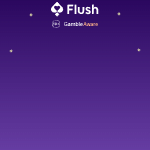Malaysia’s central bank begins a three-year initiative to tokenize Real-World Assets. It prioritizes feasible, real-world DLT innovation by 2027.
Malaysia’s central bank, Bank Negara Malaysia (BNM), formally launched a three-year Real-World Asset (RWA) tokenization initiative. The bank instantly created a very important Digital Asset Innovation Hub. It also constituted an important industry working group. This powerful roadmap aims to address highly responsible market innovation.
Central Bank Defines Three Strict Principles for DLT Experimentation
The bank’s newly published report charts a definite phased approach. Therefore, proof of concepts and pilot projects will be properly initiated in 2026. Expanded industry trials will then follow through to 2027. In addition, BNM welcomes key input from the industry on potential use cases. Stakeholders have until March 1, 2026, to send in their ideas.
BNM determined three fundamental principles for all use case selection. First, tokenization must bring measurable and tangible benefits to the real world. Teams must be able to prove these outcomes and not just assume them. Second, Distributed Ledger Technology (DLT) is the most appropriate technological tool. Specifically, the conventional solutions may work better for some issues quite often.
Related Reading: Crypto News: Fasset Wins Malaysia License to Launch Stablecoin-Powered Islamic Digital Bank | Live Bitcoin News
Furthermore, businesses must actively prevent treating DLT as a solution in and of itself. Consequently, traditional solutions such as APIs may address various business problems better and easily. Finally, all the proposed tokenization projects must be technically feasible. This feasibility is judged against the current industry capabilities.
The central bank made it very clear that the tokenization should serve practical economic purposes only. Thus, by and large, the entire selection process favors quantifiable efficiency and real-world utility needs. The bank wishes to strategically expand the project scope in the future. This expansion will occur as the local industry matures and becomes experienced.
BNM Focuses on Market Demand Amid Separate Capital Market Efforts
BNM actively opened the door for important input from the industry now. In particular, banks, fintech companies, as well as developers can immediately submit their ideas. The goal is to ensure the initiative directly reflects the current market demand. This is a balance between technological practicality and obvious economic purpose.
This particular BNM initiative is very different from other current regulatory work. Therefore, it differs from the Securities Commission Malaysia (SC). The SC is absolutely focused on tokenized capital market products. For instance, the SC is currently in the process of understanding the issuance of a tokenized sukuk or bond.
On the other hand, BNM is strictly concerned with RWA tokenization. This includes important sectors such as the supply chain finance or Islamic finance assets. The general goal of this is responsible financial innovation to a huge extent. Furthermore, the program aims to increase efficiency and transparency in the market.
As such, the program will have the effect of enhancing overall market transparency. This greatly places Malaysia as an obvious regional leader in the sector. Thus, the country is voicing regulated asset tokenization in the Asia-Pacific region. The three-year roadmap is a strong indication of a national commitment.
Indeed, BNM has a strong encouragement that the market will show tangible benefits. The central bank takes care to ensure that technology plays its role for the wider economy of Malaysia.




